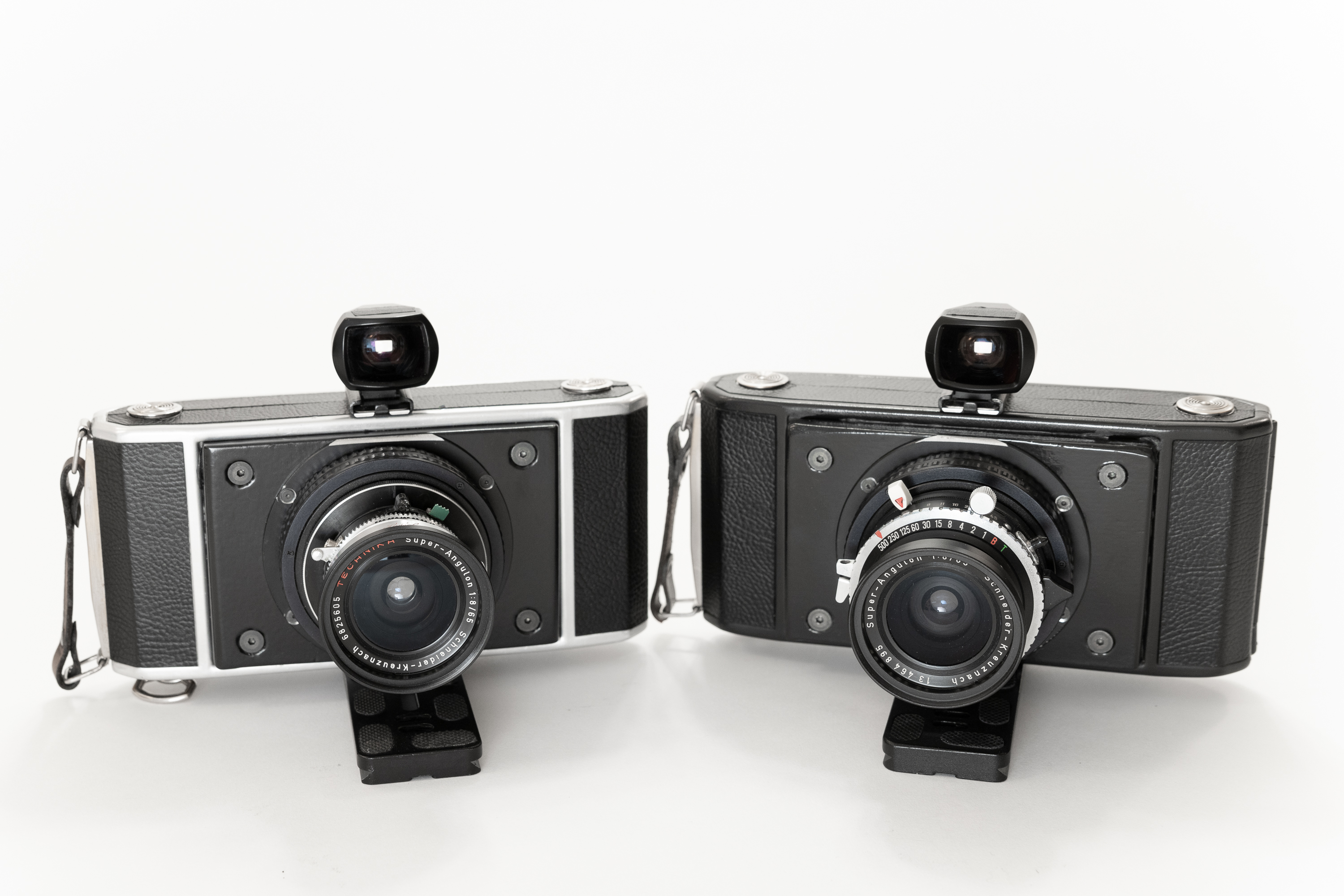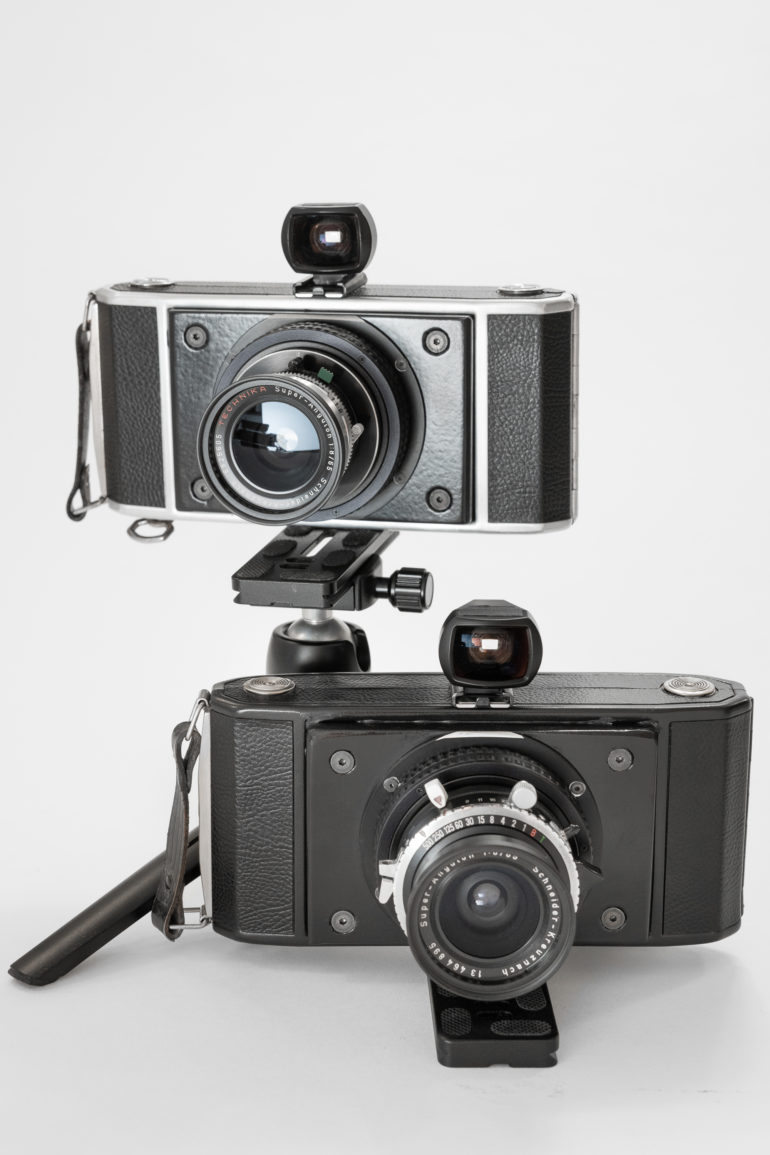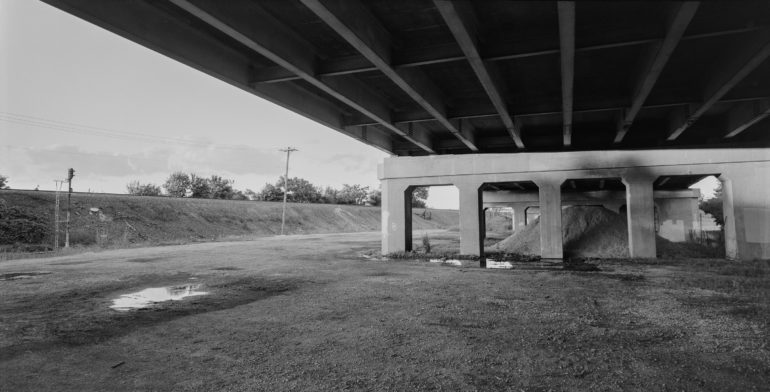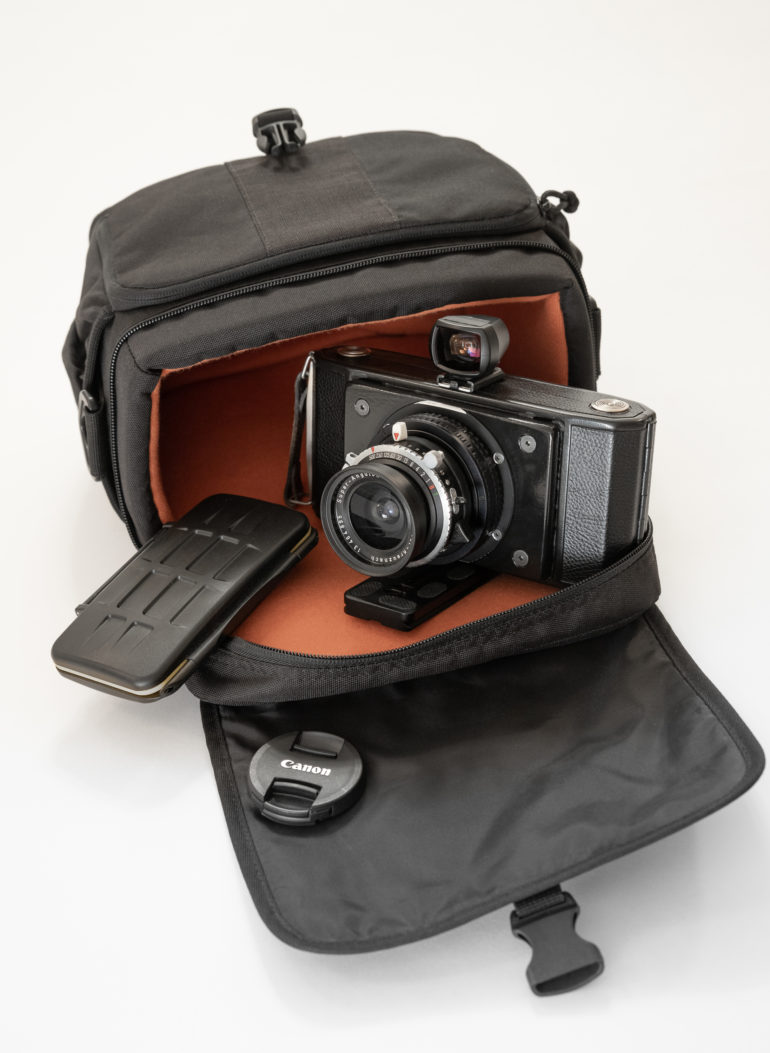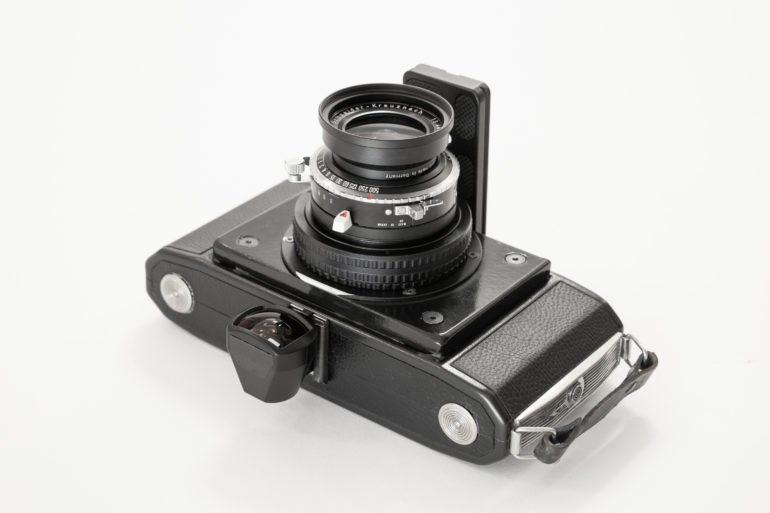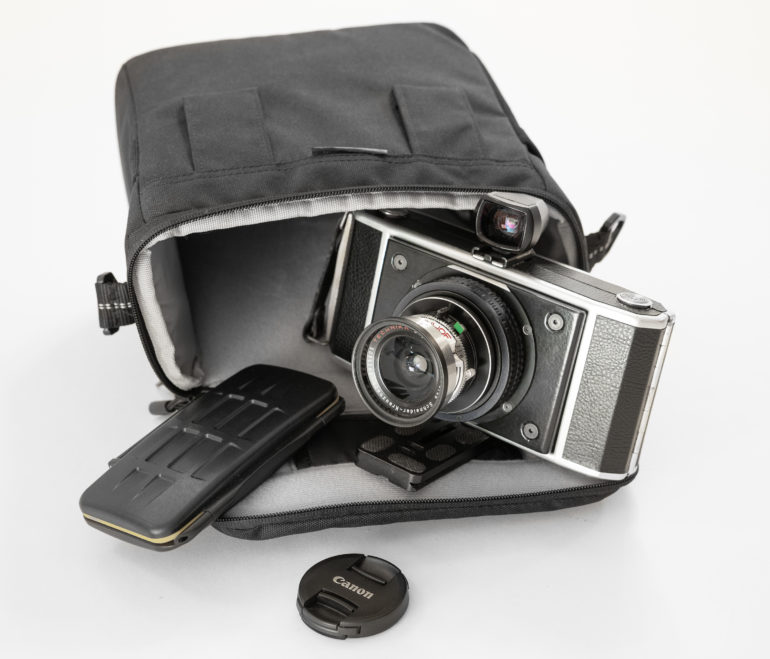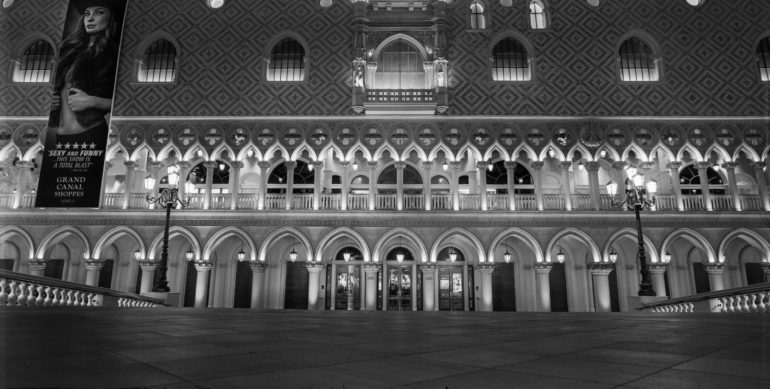All images by Dirk Fletcher. Used with permission.
The idea of a panoramic image is typically involving lots of shooting and stitching in post-production. You could shoot at 16:9, but that’s not always available. Instead, some cameras let you do it in-camera. Photographer Dirk Fletcher recently had some fun tinkering with and refurnishing a few old school Zeiss cameras. These cameras can shoot at 6×12–that’s a panoramic format in medium format. Dirk, who works at Canon, has done fun experiments like this before. And, if anything, his work really makes me wonder why nothing digital has been made like this yet.
Phoblographer: You tinker with cameras a whole lot, but why did you choose to make the specific modifications you did to these two?
Dirk: I’ve always loved the 6×12 format, and once I realized the Zeiss 520/15 could be converted into a 6×12 camera without having to cut the body, I wanted to give it a try. These two cameras are the third and fourth 6×12’s that I have made from the Zeiss 520/15. The first one has a fixed 47mm lens, and the second used a 65mm lens, I really like the angle of view and general feel of the 65mm on a 6×12 pano. It is a comfortable view for general shooting without being crazy wide.
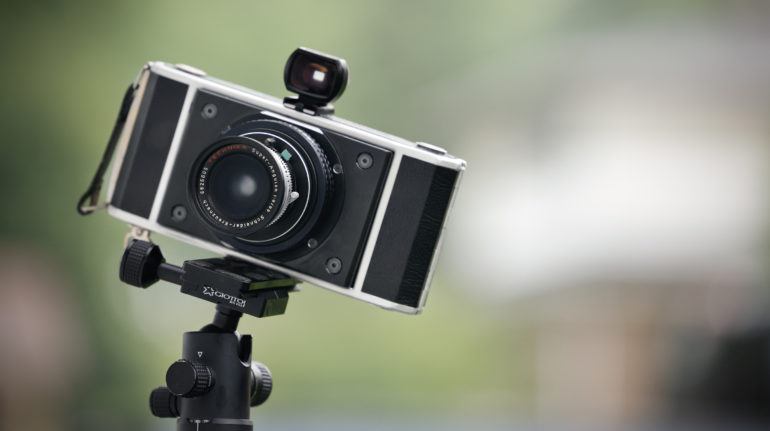
Phoblographer: So these are 6×12 cameras: are you changing that up at all? Maybe to shoot Instax Wide (a guy can hope) or to keep shooting 120?
Dirk: I’m actually making the frame a bit smaller from the original format. The Zeiss Ikon 520/15 (or Ikonta D) camera that I’m starting out with shot a 6.5 x 11 frame on larger 116 or 616 rollfilm.
After my conversion, the camera gives you six 2 1/4 x 11 images on standard 120 film in a masked down film gate. You end up shooting frames 3, 5 1/2, 8, 10 1/2, 13, 15 1/2 on 120 film. Because the film is advanced with the red window, 220 film cannot be shot in these cameras.
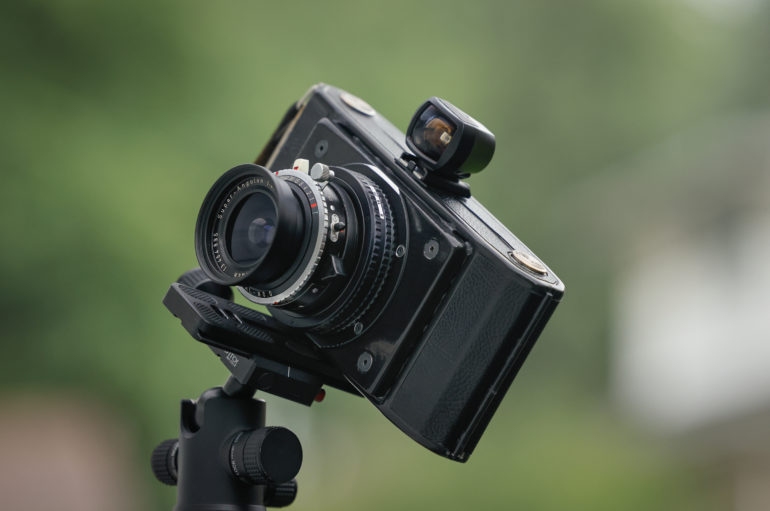
Phoblographer: What are you doing to the lenses?
Dirk: Both of these two use a Schneider 65mm f/8 Super Angulon installed into a focusing helical mount. The f/8 is a terrific little performer especially for its size. The chrome and black camera is using a Linhof Technika branded lens and shutter, while the completely blacked out camera is using a later version (but still single coated) in a matching black Copal shutter. An early conversion that I made used a single coated 65mm f/5.6 which is a great lens too, but it is so much larger than the f/8 version. With the smaller f/8, I found shooting between f/161/2 and f/221/2 is the sweet spot of the f/8 lens. Shooing in that range pretty much matches the larger single coated 65mm f/5.6 Super Angulon.
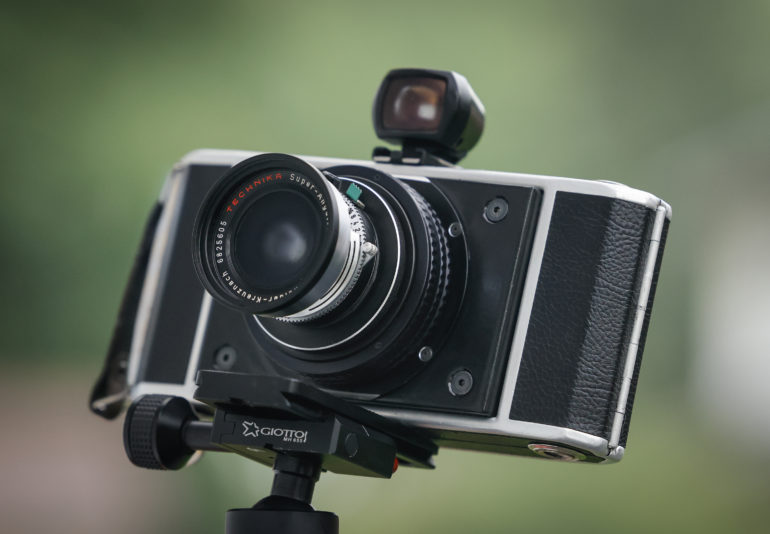
Whether it’s a pano camera or a 4×5 camera, with all of my film camera conversions, the reality is I’m usually going to be using it alongside of a digital camera. Because of that, size and weight are my main design considerations. My goal is to be able to pull it out of the bag, shoot a couple frames and easily slide it back in my bag. The smaller f/8 is perfect for this.
Phoblographer: What was so special about these cameras that you’ve enhanced and updated?
Dirk: The folding door is completely removed and the cameras are stripped down to bare metal. After a deep clean, they are buffed out and either painted as the case with the black camera before being recovered with a modern leather kit. The flip up finder is removed and I’m pretty excited with these two cameras as I’ve found a super low-profile accessory shoe for the modern 21mm Voigtlander finder. Before I found these smaller accessory shoes, I was using either accessory finders from the 60’s that mounted on the prism or modern accessory shoes used for flashes. The smallest one I could find was the SmallRig accessory shoe and that still added 1/2 inch or so to the height of the camera. These are super flat with a beefy spring mechanism to keep the finder from falling off in your bag or worse getting lost when you are shooting.
Phoblographer: Have you shot and developed anything that you really like with these?
Dirk: I do, I almost always carry a film camera with me when I’m out shooting, while I still like to shoot 4×5, these 6×12 cameras are much smaller and more convenient to shoot so they end up getting more use.
Phoblographer: What are some of the most difficult parts to repair on cameras like this? Can I assume it’s the bellows?
Dirk: The bellows are changed as part of the update. Believe it or not, the initial stripping is much more difficult than I expected. I don’t know what kind of German adhesives was used in 1930 but I was surprised how much work it took to get them clean and ready. After my first attempt, I took barely stripped camera to Home Depot and told the woman in the paint department ‘this is 90-year old German paint and glue that I can’t get off’. She kinda smiled and got me the goods, as I was walking away, she stopped me and said, ‘you’re going to need some gloves, and don’t get the cheap ones’. I still find that amusing, kinda wish whoever picked that glue out 90 years ago could have heard that exchange.
Phoblographer: What’s the process of restoring the ground glass like? Focusing with ground glass is pretty difficult to begin with! I really wish that the blue cellophane trick worked with these the way it does with rangefinders.
Dirk: It’s even worse with the f/8 lens, the f/5.6 was better. I keep wanting to try doing a conversion with the either the f/4.5 Rodenstock or the f/4 Nikkor 65mm, but as I mentioned, the cameras are really designed to be as small as possibl. Both the Rodenstock and Nikkor are a chunk and a half and might be the difference between bringing it or leaving it at home.
It’s nice to have a ground glass for more deliberate shooting especially if you are on sticks to confirm your composition and focus, the cameras are really intended to stopped down a bit, scale focused and shot like crazy!
To really be able to use the ground glass you need to use a dark cloth just as you would with a 4×5 camera.


